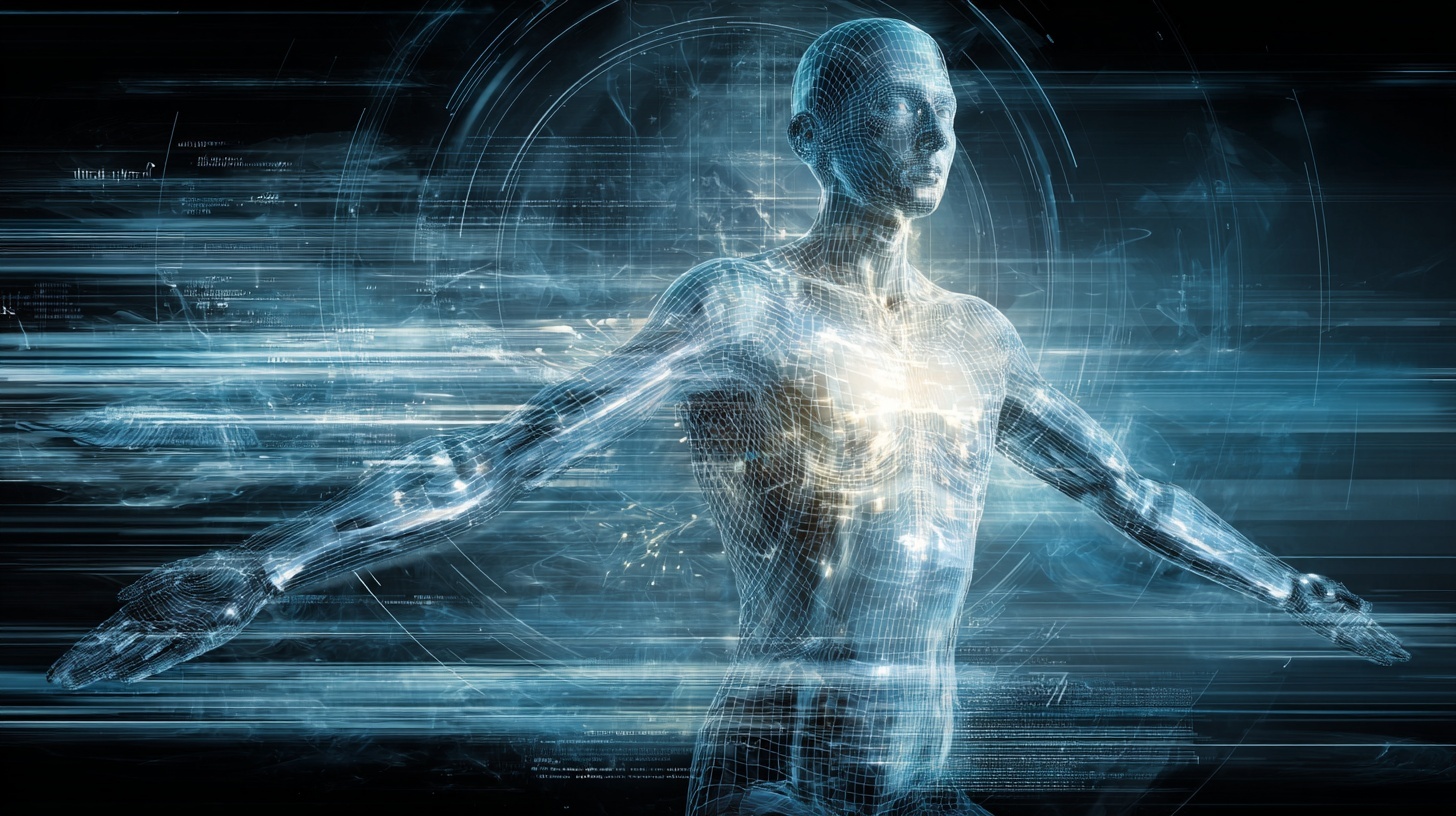A Theoretical Exploratory Paper
Abstract
This theoretical exploratory paper proposes a new paradigm for understanding collective trauma in the digital age through the lens of network-based persecution mechanisms. While conventional collective trauma research has focused on centralized persecution by state power, this work presents theoretical models of distributed, self-organizing network-type persecution as thought experiments for academic consideration.
Using the documented case of the September 2025 incident involving conservative activist Charlie Kirk as a factual foundation, we develop theoretical frameworks to analyze structural changes in persecution mechanisms. The paper proposes four hypothetical characteristics of digital-age collective trauma: (1) algorithm-mediated emotional contagion, (2) distributed antagonization processes, (3) weaponization of meaning, and (4) collective corruption of consciousness operating systems.
Based on these theoretical explorations, we propose a "consciousness evolution architecture" for collective healing as a conceptual framework requiring empirical validation. This research offers theoretical contributions to understanding 21st-century social phenomena while clearly distinguishing between established facts and theoretical hypotheses.
I. Introduction and Methodological Framework
1.1 Documented Case Foundation
On September 10, 2025, conservative activist Charlie Kirk was shot and killed during a lecture at Utah Valley University in Utah, United States. The 22-year-old suspect, Tyler Robinson, was arrested and charged with the killing. Investigators recovered bullet casings with various inscriptions, including "Hey fascist! Catch!" along with directional arrow symbols, from the scene. This incident represents a documented case of contemporary political violence that serves as a factual foundation for theoretical analysis.
This documented event provides an empirical starting point for theoretical exploration of how individual acts of violence may emerge from broader collective dynamics in digital environments, while we emphasize that any theoretical connections proposed in this paper require independent empirical verification.
1.2 Theoretical Research Approach
This paper employs speculative academic methodology to construct theoretical models that may help understand contemporary social phenomena. Our approach involves:
Thought Experimental Method: Developing hypothetical frameworks to explore potential mechanisms of collective psychological processes in digital environments.
Systems Theoretical Modeling: Creating conceptual models that integrate existing social science theories with speculative frameworks for digital-age phenomena.
Comparative Historical Analysis: Examining documented historical patterns alongside contemporary events to propose theoretical continuities and discontinuities.
Consciousness Engineering Perspective: Applying theoretical frameworks from consciousness studies to collective social phenomena as academic thought experiments.
II. Theoretical Framework Development
2.1 Proposed Redefinition of Collective Trauma
As a theoretical contribution, we propose expanding conventional collective trauma definitions as follows:
Theoretical Hypothesis: Collective trauma in the digital age may be understood as the pathological transformation of collective identity and social cohesion resulting from the breakdown of shared meaning-worlds among networked individuals. We propose that serious collective trauma can potentially be generated through symbolic and informational attacks without accompanying physical violence.
This theoretical redefinition introduces several conceptual innovations for academic consideration:
(1) Decentering Physicality: Theoretical removal of physical damage from necessary conditions, positioning symbolic/informational damage as potentially central.
(2) Network Properties Emphasis: Hypothetical positioning of network structures themselves, rather than accumulations of individual experiences, as sites of trauma generation.
(3) Meaning-World Concept Integration: Theoretical application of sociology of knowledge to position the breakdown of shared meaning structures as potentially essential to trauma processes.
2.2 Theoretical Model of Network-Type Persecution
Thought Experiment: Imagine persecution mechanisms that operate not through centralized authority but through distributed network effects. How might such systems function, and what theoretical characteristics would they exhibit?
We propose the following theoretical characteristics for academic consideration:
2.2.1 Hypothetical Distributed Power Exercise
Drawing on theoretical extensions of power analysis, we propose a speculative mathematical formulation:
This theoretical model suggests that digital power might operate horizontally and network-based rather than vertically and hierarchically, with power sources potentially deriving from network influence rather than official position.
2.2.2 Theoretical Self-Organizing Antagonization
As a theoretical extension of mimetic theory, we propose analyzing antagonization processes in digital spaces through the following hypothetical model:
E(t+1) = E(t) × (1 + α × N × A)
Where E represents antagonistic emotion intensity, α represents mimetic coefficient, N represents network density, and A represents algorithmic amplification rate. This serves as a theoretical framework requiring empirical validation.
III. Historical Comparative Foundation
3.1 McCarthyism as Historical Reference Point
McCarthyism of the 1950s provides a documented historical reference for systematic persecution within America. Key documented characteristics include:
Documented Power Structure: Federal government, House Un-American Activities Committee (HUAC), FBI
Documented Methods: Congressional hearings, blacklists, legal punishment
Documented Targets: Clear political criteria (communist affiliations)
Documented Impact: Vertical (power → citizens), visible, institutional
The House Un-American Activities Committee, established in 1938, conducted investigations through the 1940s and 1950s into alleged communist activities, representing a documented example of centralized persecution mechanisms.
3.2 Proposed Structural Characteristics of Digital-Era Processes
Based on theoretical analysis, we propose the following hypothetical characteristics of contemporary persecution mechanisms for academic consideration:
| Element | McCarthyism (1950s) - Documented | Digital-Era Mechanisms - Theoretical |
|---|---|---|
| Power Structure | Centralized, hierarchical | Hypothetically distributed, networked |
| Agents | State institutions | Theoretically: Individuals, algorithms |
| Methods | Institutional punishment | Theoretically: Symbolic violence |
| Targets | Clear, fixed criteria | Theoretically: Fluid, emotional |
| Media | Unidirectional, controlled | Theoretically: Bidirectional, manipulated |
We theoretically propose that the essential change represents a transition from "institutional persecution" to hypothetical "environmental persecution" - a shift from explicit persecution by specific institutions to implicit persecution potentially embedded in information environments themselves.
IV. Theoretical Aspects of Digital-Age Collective Trauma
4.1 Proposed Algorithm-Mediated Emotional Propagation
Theoretical Hypothesis: Digital environments may facilitate new forms of emotional contagion that differ significantly from conventional interpersonal emotional transmission.
We propose the following theoretical mathematical model for academic consideration:
dE/dt = β × S × (I/N) × A(t) - γ × E
Where:
- E: Number of individuals with specific emotions
- S: Number of emotionally uninfected individuals
- I: Number of emotionally infected individuals
- N: Total number of individuals
- β: Infection rate
- γ: Recovery rate
- A(t): Time-dependent algorithmic amplification coefficient
The theoretical innovation lies in introducing the algorithmic coefficient A(t), suggesting that infection rates may change dynamically in digital environments, unlike conventional epidemiological models with constant rates.
4.2 Theoretical Distributed Antagonization Processes
Thought Experiment: Consider how collective hostility might form and maintain itself without clear leaders or organizations. What theoretical mechanisms could enable such self-organizing antagonization?
We propose analyzing antagonization in digital space as a theoretical self-organizing phenomenon with the following hypothetical characteristics:
Theoretical Local Interactions: Emotional reactions between individuals
Hypothetical Emergent Properties: Group-level antagonization
Proposed Feedback Loops: Antagonization → counter-antagonization → antagonization amplification
Through these theoretical mechanisms, collective hostility might theoretically form and maintain without centralized coordination.
4.3 Proposed Theory of Collective Consciousness Operating System Corruption
As a novel theoretical contribution, we propose conceptualizing individual consciousness structures as "Consciousness Operating Systems" and analyzing their hypothetical collective corruption processes.
4.3.1 Theoretical Components of Consciousness OS
Proposed Kernel: Basic value judgment system (fear-based vs. trust-based)
Theoretical Processor: Information processing methods (binary vs. multi-layer processing)
Hypothetical Memory: Experience accumulation and utilization (trauma fixation vs. wisdom conversion)
Proposed Network: Connection modes with others (antagonistic vs. cooperative settings)
4.3.2 Theoretical Mechanisms of Collective Corruption
Hypothetical Algorithm-Mediated Contagion: Theoretical extension of emotional contagion research to digital environments.
Proposed Collective Cognitive Bias: Theoretical amplification of individual confirmation bias at group levels through network effects.
Theoretical Meaning-World Fragmentation: Hypothetical process by which unified meaning-worlds fragment into antagonistic meaning-worlds due to digital division.
V. Proposed Consciousness Evolution Architecture for Collective Healing
5.1 Theoretical Foundation of Healing Principles
Central Theoretical Proposition: Recovery from collective trauma might be understood as a system's self-repair process, requiring systematic rather than individual-focused interventions.
We propose the following theoretical recovery model:
This theoretical framework suggests focusing on emergent healing processes at the system level rather than simple expansion of individual therapy.
5.2 Proposed Consciousness Evolution Stages
As a theoretical contribution, we propose the following hypothetical developmental stages for collective consciousness:
Theoretical Stage 1: Separative Consciousness (Us vs. Them)
Proposed Stage 2: Inclusive Consciousness (Us and Them)
Hypothetical Stage 3: Integrative Consciousness (We as Complex System)
Speculative Stage 4: Evolutionary Consciousness (Collective Learning System)
5.3 Proposed Practical Intervention Methods
5.3.1 Theoretical Multi-Layer Dialogue Protocol
We propose the following theoretical intervention framework:
Theoretical Stage 1: Disclosure of multi-layer identities
Proposed Stage 2: Mapping resonance points
Hypothetical Stage 3: Creative problem reframing
Theoretical Stage 4: Collaborative solution exploration
Proposed Stage 5: Staged implementation design
5.3.2 Theoretical Ethical Transformation of Algorithm Design
As a technological intervention hypothesis, we propose algorithmic transformation:
Current Model (Documented): Engagement maximization → emotional reaction priority → division promotion
Theoretical Alternative: Understanding maximization → constructive dialogue priority → integration promotion
VI. Theoretical Limitations and Future Research Directions
6.1 Acknowledged Theoretical Constraints
Empirical Verification Required: All theoretical models presented require rigorous empirical testing before practical application.
Cultural Specificity Questions: Theoretical frameworks developed primarily from Western case studies may not apply universally across different cultural contexts.
Causal Relationship Challenges: Complex social phenomena make it difficult to isolate effects of proposed mechanisms from other factors.
Scalability Uncertainties: Theoretical models require testing at various scales to determine practical applicability.
6.2 Proposed Research Directions
Empirical Validation Studies: Systematic testing of theoretical models through controlled experiments and longitudinal studies.
Cross-Cultural Verification: Testing theoretical frameworks across diverse cultural, political, and technological environments.
Interdisciplinary Integration: Collaboration with neuroscience, cognitive science, information science, and systems science to refine theoretical models.
Preventive Intervention Development: Research into theoretical frameworks for preventing collective trauma rather than only treating it.
VII. Conclusion
7.1 Summary of Theoretical Contributions
This theoretical exploratory paper has presented several novel frameworks for academic consideration:
(1) Network-Type Persecution Theory: A theoretical model transitioning from centralized to distributed persecution mechanisms, offering new paradigms for understanding power exercise in digital environments.
(2) Consciousness Operating System Framework: A novel theoretical expansion of individual consciousness concepts to social system levels, providing new approaches for analyzing collective consciousness phenomena.
(3) Consciousness Evolution Architecture: A theoretical framework understanding recovery from collective trauma as systematic self-repair, with proposed practical intervention methodologies.
7.2 Empirical Foundation and Theoretical Extensions
This work builds upon documented research including Jeffrey Alexander's "Cultural Trauma and Collective Identity" (2004) and Kai Erikson's "Everything in Its Path" (1976), while extending into new theoretical territories requiring empirical verification.
The documented case of the September 2025 incident provides a factual foundation for theoretical exploration, while clearly distinguishing between established facts and speculative frameworks.
7.3 Long-Term Theoretical Implications
The ultimate theoretical goal of this framework is to contribute to understanding humanity's potential collective consciousness evolution. We propose three theoretical transitions:
From Biological to Conscious Evolution: Theoretical transition from Darwinian natural selection to intentional, collaborative consciousness evolution as humanity's potential 21st-century development.
From Individual to Collective Awakening: While conventional approaches remain at individual levels, this theoretical framework presents systematic methodologies for collective transformation.
From Competition to Co-creation Principles: Theoretical transition from zero-sum competition to infinite-sum co-creation as foundation for sustainable civilization.
Final Research Disclaimer: All theoretical frameworks, mathematical models, and proposed interventions presented in this paper require rigorous empirical validation before practical implementation. This work serves as theoretical exploration intended to stimulate academic discussion and guide future research directions.
References
- Alexander, J. C. (2004). Cultural Trauma and Collective Identity. Berkeley: University of California Press.
- Erikson, K. T. (1976). Everything in Its Path: Destruction of Community in the Buffalo Creek Flood. New York: Simon & Schuster.
- Castells, M. (1996). The Information Age: Economy, Society and Culture. Oxford: Blackwell.
- Bauman, Z. (2000). Liquid Modernity. Cambridge: Polity Press.
- Foucault, M. (1975). Discipline and Punish: The Birth of the Prison. New York: Vintage Books.
- Girard, R. (1972). Violence and the Sacred. Baltimore: Johns Hopkins University Press.
- Habermas, J. (1981). The Theory of Communicative Action. Boston: Beacon Press.
- Various news sources regarding the September 2025 Utah Valley University incident (verified factual references).

